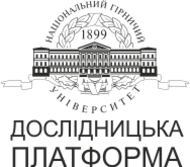№79-23
Justification of measures for the renaturalization of the pond on the Nizhnya Tersa river
H. Hapich1, V. Zaporozhchenko1, І. Chushkina2, A. Makarov1, K. Leshchynskyi1
1Dnipro State Agrarian and Economic University, Dnipro, Ukraine
2Dnipro University of Technology, Dnipro, Ukraine
Coll.res.pap.nat.min.univ. 2024, 79:262–277
Full text (PDF)
https://doi.org/10.33271/crpnmu/79.262
ABSTRACT
Purpose. To substantiate and assess the environmental and economic impact of pond improvement measures within the village of Troitske (Synelnykivskyi district Dnipro region) in order to improve the ecological and hydrological regimes of the water body.
The methods. An analytical study of the best international and domestic practices for the renaturalisation of river ecosystems and water bodies. Calculations of engineering and technological parameters, as well as ecological and economic assessment of the research results, were performed using generally accepted methods, state legal norms and standards of Ukraine. The geo-ecological assessment of the current state of the pond catchment area and water quality was carried out using field expeditionary research with water sampling and laboratory analysis (2019-2021). The open-access software package (geographic information systems) QGIS was used in the study.
Findings. The general methods, techniques and measures for the renaturalisation of the pond are substantiated and evaluated. It is determined that for a water body with a water mirror area of 13.7 hectares and a catchment area of 24.3 hectares, the duration of the main types of organisational and technological work will be about 5 months, labour costs – 4311.9 man-hours, and the total estimated cost of the project is about UAH 20 million.
The originality. It is a comprehensive scientific and practical substantiation of measures for reclamation of aquatic ecosystems of rivers and artificial reservoirs for the conditions of the south-eastern regions of Ukraine, depending on the existing natural and economic situation. Engineering, technical and organisational approaches to achieving an environmentally safe level of functioning of aquatic and near-water ecosystems and obtaining a socio-economic effect from the implementation of renaturation measures have been improved. The dependencies of different types of impact on water bodies during the implementation of environmental projects are substantiated.
Practical implementation. The example of a typical water management facility shows the possibility of developing technological and organisational solutions for land reclamation and obtaining a comprehensive environmental and economic effect as a result of the implementation of environmental management measures. The results obtained can be applied to the further development of programmes for the restoration and rational use of water and land resources based on the principle of integrated management at the level of individual settlements, communities, catchment areas or regions.
Keywords: pond, small river, environmental management, hydraulic structure, environmental safety, reclamation.
References
1. Kulikov, P.M., Petrochenko, O.V., & Kuzmin, R.I. (2021). Proektuvannia, inzhenerno-biotekhnichne vporiadkuvannia ta ekspluatatsiia vodookhoronnykh zon vodnykh ob’iektiv: navch. posibnyk. Vydavnychyi dim «ArtEk».
2. Vodnyi fond Ukrainy: Shtuchni vodoimy – vodoskhovyshcha i stavky: dovidnyk (2014). Kyiv: «Interpres LTD».
3. Hapich, H., Andrieiev, V., Kovalenko, V., & Makarova, T. (2022). The analysis of spatial distribution of artificial reservoirs as anthropogenic fragmentation elements of rivers in the Dnipropetrovsk Region, Ukraine. Journal of Water and Land Development, 80–85. https://doi.org/10.24425/jwld.2022.140783
4. Khilchevskiy,V., Sherstyuk,N.,&Zabokrytska,M. (2020). Researches of the chemical composition of surface water in Ukraine, 1920–2020 (review). Journal of Geology, Geography and Geoecology, 29(2), 304–326. https://doi.org/10.15421/112028
5. Osadchyi,V.I. (2017). Resources and quality of surface water in Ukraine under conditions of anthropogenic load and climate change. Visnyk Natsion. Akademiyi Nauk Ukrayiny, 8, 29–46. https://doi.org/10.15407/visn2017.08.029
6. Rehionalni dopovidi ta Ekolohichni pasporty Dnipropetrovskoi oblasti (n.d.). https://adm.dp.gov.ua/pro-oblast/ekologiya-pro-oblast/ekologiya
7. Rehionalnyi ofis vodnykh resursiv u Dnipropetrovskii oblasti. Ofitsiinyi sait (n.d.). http://dovr.gov.ua/index.htm
8. Bonada, N., Cañedo-Argüelles, M., Gallart, F., vonSchiller, D., Fortuño, P., Latron, J., Llorens, P., Múrria, C., Soria, M., Vinyoles, D., & Cid, N. (2020). Conservation and Management of Isolated Pools in Temporary Rivers. Water, 12(10), 2870. https://doi.org/10.3390/w12102870
9. Friberg, N., Angelopoulos, N. V., Buijse, A. D., Cowx, I. G., Kail, J., Moe, T. F., Moir, H., O’Hare, M. T., Verdonschot, P. F. M., & Wolter, C. (2016). Effective river restoration in the 21st century: from trial and error to novel evidence-based approaches. Advances in Ecological Research, 55, 535–611. https://doi.org/10.1016/bs.aecr.2016.08.010
10. Panchenko, T., & Holub, A. (2023). Features of urban revitalization river territories. Spatial Development, 5, 80–89. https://doi.org/10.32347/2786-7269.2023.5.80-89
11. Tsaryk, L. P., Tsaryk, P. L., Kuzyk, I. R., & Tsaryk, V. L. (2021). Pryrodokorystuvannia ta okhorona pryrody u baseinakh malykh richok: monohrafiia (vydannia druhe dopovnene i pereroblene). Ternopil: SMP «Taip».
12. Hapich, H. V., & Rudakov, L. M. (2016). Otsiniuvannia tekhnichnoho stanu ta propusknoi spromozhnosti vodoskydiv na r. Nyzhnia Tersa. Visnyk NUVHP. Tekhnichni nauky: zbirnyk nauk. prats. Rivne: NUVHP, 4(76), 149–155.
13. Hapich, H., Andrieiev, V., Kovalenko, V., Hrytsan, Yu., & Pavlychenko, A. (2022). Study of fragmentation impact of small riverbeds by artificial waters on the quality of water resources. Naukovyi Visnyk Natsionalnoho Hirnychoho Universytetu,3, 185–189. https://doi.org/10.33271/nvngu/2022-3/185
14. River Restoration Success Stories: Lessons Learned and Best Practices(2024).https://riversarelife.com/articles/river-restoration-success-stories-lessons-learned-and-best-practices
15. England J., Skinner K.S., & Carter M.G. (2008). Monitoring, river restoration and the Water Framework Directive. Water and Environment Journal, 22(4), 227–234. https://doi.org/10.1111/j.1747-6593.2007.00090.x
16. Chushkina, I., Hapich, H., Matukhno, O., Pavlychenko, A., Kovalenko, V., & Sherstiuk, Y. (2024). Loss of small rivers across the steppe: climate change or the hand of man? Case study of the Chaplynka river. International Journal of Environmental Studies, 260–274. https://doi.org/10.1080/00207233.2024.2314853
17. Sklad i zmist materialiv otsinky vplyviv na navkolyshnie seredovyshche (OVNS). DBN A.2.2-1:2021. (2022). Kyiv Ministerstvo rozvytku hromad ta terytorii Ukrainy.




